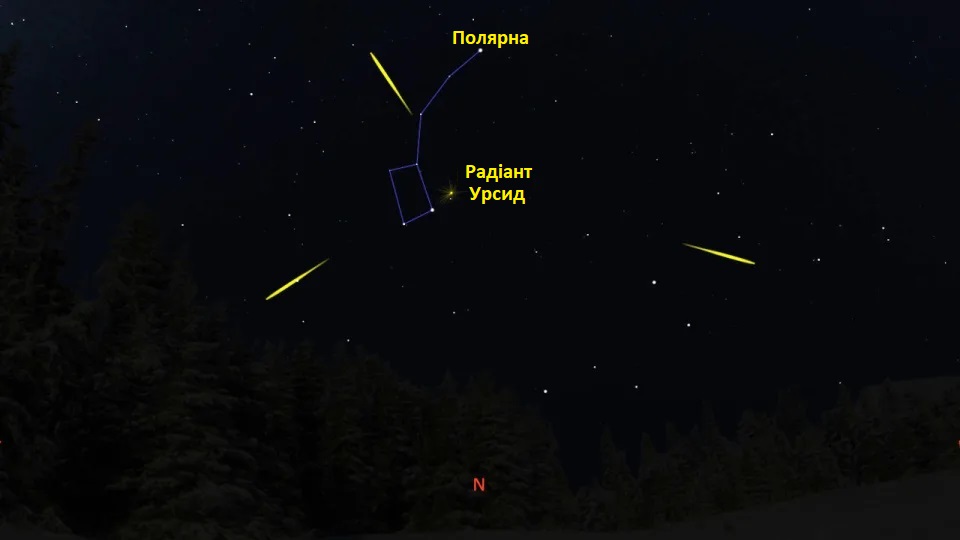Of all the important but not too spectacular constellations in the northern sky, Ursa Minor is undoubtedly the most famous. This constellation is the home of the North Star, which allows us easily find the direction to the north on cloudless nights. And there is also the Ursids— the last pre-New Year’s fairly powerful meteor shower. At its maximum, which usually falls on December 22, it “produces” up to 20 meteors per hour.
The Ursid Radiant — the point from which meteors “take off” — is only 12° from the northern pole of the celestial sphere, so it does not go beyond the horizon in almost the entire Northern Hemisphere of the Earth. In our latitudes, observing this flow is quite simple, only cloudy December weather and an unfavorable Moon phase can become an obstacle. However, the last circumstance of this year can be ignored: the new Moon will be “born” on December 23, so it will be absent from the night sky for the next few days.

The width of the Ursids swarm is relatively small; its activity is recorded for 10-11 days — from December 17 to 27. Their maximum is also relatively short (no more than 6-8 hours). This stream produces few bright meteors, the speed of their entry into the Earth’s atmosphere is 33 km/s, which is close to the average for all known streams. Its meteoric particles were ejected by Comet Tuttle (8P/Tuttle) at various times, and they are distributed in a rather interesting way along its orbit: the greatest concentration moves along it at a point approximately opposite to the position of the comet itself. The reason for this is the gravitational influence of Jupiter. Therefore, despite the fact that this “tailed star” passed perihelion in August 2021, astronomers expect activation of the Ursids no earlier than 2027. Its next return will take place in 2035 and will not be very favorable for observations.

